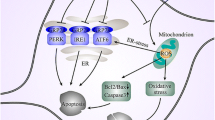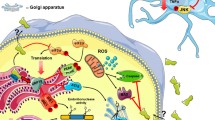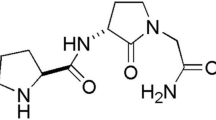Abstract
Available treatment for Parkinson’s disease (PD) is mainly symptomatic instead of halting or reversing degenerative processes affecting the disease. Research on the molecular pathogenesis of PD has suggested reduced trophic support as a possible cause or mediator of neurodegeneration. In animal models of the disease, neurotrophic factors prevent neurodegeneration and induce behavioral recovery. Some anti-Parkinsonian drugs show neuroprotective activity, but it is not known whether the drug-induced neuroprotection is mediated by neurotrophic factors. In this study, we have investigated the influence of two neuroprotective anti-Parkinsonian drugs, the monoamine oxidase B inhibitor selegiline and the adenosine A2A antagonist SCH 58261, on the levels of brain-derived neurotrophic factor (BDNF) and cerebral dopamine neurotrophic factor (CDNF) in the mouse brain. Protein levels of BDNF and CDNF were quantified by western blot after 2 weeks of treatment with either of the drugs or placebo. CDNF levels were not significantly influenced by selegiline or SCH 58261 in any brain area studied. Selegiline treatment significantly increased BDNF levels in the anterior cingulate cortex (1.55 ± 0.22, P < 0.05, Student’s t-test). In the striatum, selegiline increased BDNF content by 32%, but this change did not reach statistical significance (1.32 ± 0.15, P < 0.13, Student’s t-test). Our data suggest that neurotrophic factors, particularly BDNF may play a role in the neuroprotective effects of selegiline, but do not support the hypothesis that anti-Parkinsonian drugs would work by increasing the levels of CDNF in brain.


Similar content being viewed by others
References
Airaksinen MS, Saarma M (2002) The GDNF family: signalling, biological functions and therapeutic value. Nat Rev Neurosci 3:383–394
Airaksinen MS, Titievsky A, Saarma M (1999) GDNF family neurotrophic factor signaling: four masters, one servant? Mol Cell Neurosci 13:313–325
Altar CA, Cai N, Bliven T, Juhasz M, Conner JM, Acheson AL, Lindsay RM, Wiegand SJ (1997) Anterograde transport of brain-derived neurotrophic factor and its role in the brain. Nature 389:856–860
Angelucci F, Aloe L, Iannitelli A, Gruber SH, Mathe AA (2005) Effect of chronic olanzapine treatment on nerve growth factor and brain-derived neurotrophic factor in the rat brain. Eur Neuropsychopharmacol 15:311–317
Ansari KS, Yu PH, Kruck TP, Tatton WG (1993) Rescue of axotomized immature rat-facial motoneurons by R(−)-deprenyl: stereospecificity and independence from monoamine oxidase inhibition. J Neurosci 13:4042–4053
Chen B, Dowlatshahi D, MacQueen GM, Wang JF, Young LT (2001a) Increased hippocampal BDNF immunoreactivity in subjects treated with antidepressant medication. Biol Psychiatry 50:260–265
Chen JF, Xu K, Petzer JP, Staal R, Xu YH, Beilstein M, Sonsalla PK, Castagnoli K, Castagnoli N Jr, Schwarzschild MA (2001b) Neuroprotection by caffeine and A(2A) adenosine receptor inactivation in a model of Parkinson’s disease. J Neurosci 21:RC143
Ebadi M, Sharma S, Shavali S, El Refaey H (2002) Neuroprotective actions of selegiline. J Neurosci Res 67:285–289
Ebadi M, Brown-Borg H, Ren J, Sharma S, Shavali S, El ReFaey H, Carlson EC (2006) Therapeutic efficacy of selegiline in neurodegenerative disorders and neurological diseases. Curr Drug Targets 7:1513–1529
Eslamboli A, Georgievska B, Ridley RM, Baker HF, Muzyczka N, Burger C, Mandel RJ, Annett L, Kirik D (2005) Continuous low-level glial cell line-derived neurotrophic factor delivery using recombinant adeno-associated viral vectors provides neuroprotection and induces behavioral recovery in a primate model of Parkinson’s disease. J Neurosci 25:769–777
Esmaeili F, Tiraihi T, Movahedin M, Mowla SJ (2006) Selegiline induces neuronal phenotype and neurotrophins expression in embryonic stem cells. Rejuvenation Res 9:475–484
Fiebich BL, Biber K, Lieb K, van Calker D, Berger M, Bauer J, Gebicke-Haerter PJ (1996) Cyclooxygenase-2 expression in rat microglia is induced by adenosine A2a-receptors. Glia 18:152–160
Frim DM, Uhler TA, Galpern WR, Beal MF, Breakefield XO, Isacson O (1994) Implanted fibroblasts genetically engineered to produce brain-derived neurotrophic factor prevent 1-methyl-4-phenylpyridinium toxicity to dopaminergic neurons in the rat. Proc Natl Acad Sci USA 91:5104–5108
Fukumoto T, Morinobu S, Okamoto Y, Kagaya A, Yamawaki S (2001) Chronic lithium treatment increases the expression of brain-derived neurotrophic factor in the rat brain. Psychopharmacology 158(1):100–106
Gash DM, Zhang Z, Ovadia A, Cass WA, Yi A, Simmerman L, Russell D, Martin D, Lapchak PA, Collins F, Hoffer BJ, Gerhardt GA (1996) Functional recovery in parkinsonian monkeys treated with GDNF. Nature 380:252–255
Gill SS, Patel NK, Hotton GR, O’Sullivan K, McCarter R, Bunnage M, Brooks DJ, Svendsen CN, Heywood P (2003) Direct brain infusion of glial cell line-derived neurotrophic factor in Parkinson disease. Nat Med 9:589–595
Gomes CA, Vaz SH, Ribeiro JA, Sebastiao AM (2006) Glial cell line-derived neurotrophic factor (GDNF) enhances dopamine release from striatal nerve endings in an adenosine A2A receptor-dependent manner. Brain Res 1113:129–136
Grondin R, Zhang Z, Yi A, Cass WA, Maswood N, Andersen AH, Elsberry DD, Klein MC, Gerhardt GA, Gash DM (2002) Chronic, controlled GDNF infusion promotes structural and functional recovery in advanced parkinsonian monkeys. Brain 125:2191–2201
He DY, Ron D (2006) Autoregulation of glial cell line-derived neurotrophic factor expression: implications for the long-lasting actions of the anti-addiction drug, Ibogaine. FASEB J 20:2420–2422
Howells DW, Porritt MJ, Wong JY, Batchelor PE, Kalnins R, Hughes AJ, Donnan GA (2000) Reduced BDNF mRNA expression in the Parkinson’s disease substantia nigra. Exp Neurol 166:127–135
Huang EJ, Reichardt LF (2001) Neurotrophins: roles in neuronal development and function. Annu Rev Neurosci 24:677–736
Hyman C, Hofer M, Barde YA, Juhasz M, Yancopoulos GD, Squinto SP, Lindsay RM (1991) BDNF is a neurotrophic factor for dopaminergic neurons of the substantia nigra. Nature 350:230–232
Ikeda K, Kurokawa M, Aoyama S, Kuwana Y (2002) Neuroprotection by adenosine A2A receptor blockade in experimental models of Parkinson’s disease. J Neurochem 80:262–270
Katoh-Semba R, Semba R, Takeuchi IK, Kato K (1998) Age-related changes in levels of brain-derived neurotrophic factor in selected brain regions of rats, normal mice and senescence-accelerated mice: a comparison to those of nerve growth factor and neurotrophin-3. Neurosci Res 31:227–234
Kirik D, Georgievska B, Rosenblad C, Bjorklund A (2001) Delayed infusion of GDNF promotes recovery of motor function in the partial lesion model of Parkinson’s disease. Eur J Neurosci 13:1589–1599
Kontkanen O, Törönen P, Lakso M, Wong G, Castrén E (2002) Antipsychotic drug treatment induces differential gene expression in the rat cortex. J Neurochem 83:1043–1053
Kordower JH, Emborg ME, Bloch J, Ma SY, Chu Y, Leventhal L, McBride J, Chen EY, Palfi S, Roitberg BZ, Brown WD, Holden JE, Pyzalski R, Taylor MD, Carvey P, Ling Z, Trono D, Hantraye P, Deglon N, Aebischer P (2000) Neurodegeneration prevented by lentiviral vector delivery of GDNF in primate models of Parkinson’s disease. Science 290:767–773
Kordower JH, Herzog CD, Dass B, Bakay RA, Stansell J 3rd, Gasmi M, Bartus RT (2006) Delivery of neurturin by AAV2 (CERE-120)-mediated gene transfer provides structural and functional neuroprotection and neurorestoration in MPTP-treated monkeys. Ann Neurol 60:706–715
Lang AE, Gill S, Patel NK, Lozano A, Nutt JG, Penn R, Brooks DJ, Hotton G, Moro E, Heywood P, Brodsky MA, Burchiel K, Kelly P, Dalvi A, Scott B, Stacy M, Turner D, Wooten VG, Elias WJ, Laws ER, Dhawan V, Stoessl AJ, Matcham J, Coffey RJ, Traub M (2006) Randomized controlled trial of intraputamenal glial cell line-derived neurotrophic factor infusion in Parkinson disease. Ann Neurol 59:459–466
Le Foll B, Diaz J, Sokoloff P (2005) A single cocaine exposure increases BDNF and D3 receptor expression: implications for drug-conditioning. Neuroreport 16:175–178
Lin LF, Doherty DH, Lile JD, Bektesh S, Collins F (1993) GDNF: a glial cell line-derived neurotrophic factor for midbrain dopaminergic neurons. Science 260:1130–1132
Lindholm P, Voutilainen MH, Lauren J, Peranen J, Leppanen VM, Andressoo JO, Lindahl M, Janhunen S, Kalkkinen N, Timmusk T, Tuominen RK, Saarma M (2007) Novel neurotrophic factor CDNF protects and rescues midbrain dopamine neurons in vivo. Nature 448:73–77
Matsuya T, Takuma K, Sato K, Asai M, Murakami Y, Miyoshi S, Noda A, Nagai T, Mizoguchi H, Nishimura S, Yamada K (2007) Synergistic effects of adenosine A2A antagonist and L-DOPA on rotational behaviors in 6-hydroxydopamine-induced hemi-Parkinsonian mouse model. J Pharmacol Sci 103(3):329–332
Melani A, Gianfriddo M, Vannucchi MG, Cipriani S, Baraldi PG, Giovannini MG, Pedata F (2006) The selective A2A receptor antagonist SCH 58261 protects from neurological deficit, brain damage and activation of p38 MAPK in rat focal cerebral ischemia. Brain Res 1073–1074:470–480
Minghetti L, Greco A, Potenza RL, Pezzola A, Blum D, Bantubungi K, Popoli P (2007) Effects of the adenosine A2A receptor antagonist SCH 58621 on cyclooxygenase-2 expression, glial activation, and brain-derived neurotrophic factor availability in a rat model of striatal neurodegeneration. J Neuropathol Exp Neurol 66:363–371
Mizuta I, Ohta M, Ohta K, Nishimura M, Mizuta E, Hayashi K, Kuno S (2000) Selegiline and desmethylselegiline stimulate NGF, BDNF, and GDNF synthesis in cultured mouse astrocytes. Biochem Biophys Res Commun 279:751–755
Mogi M, Togari A, Kondo T, Mizuno Y, Komure O, Kuno S, Ichinose H, Nagatsu T (1999) Brain-derived growth factor and nerve growth factor concentrations are decreased in the substantia nigra in Parkinson’s disease. Neurosci Lett 270:45–48
Nibuya M, Morinobu S, Duman RS (1995) Regulation of BDNF and trkB mRNA in rat brain by chronic electroconvulsive seizure and antidepressant drug treatments. J Neurosci 15:7539–7547
Ohta K, Kuno S, Mizuta I, Fujinami A, Matsui H, Ohta M (2003) Effects of dopamine agonists bromocriptine, pergolide, cabergoline, and SKF-38393 on GDNF, NGF, and BDNF synthesis in cultured mouse astrocytes. Life Sci 73:617–626
Petrova P, Raibekas A, Pevsner J, Vigo N, Anafi M, Moore MK, Peaire AE, Shridhar V, Smith DI, Kelly J, Durocher Y, Commissiong JW (2003) MANF: a new mesencephalic, astrocyte-derived neurotrophic factor with selectivity for dopaminergic neurons. J Mol Neurosci 20:173–188
Popoli P, Frank C, Tebano MT, Potenza RL, Pintor A, Domenici MR, Nazzicone V, Pezzola A, Reggio R (2003) Modulation of glutamate release and excitotoxicity by adenosine A2A receptors. Neurology 61:S69–S71
Rantamäki T, Hendolin P, Kankaanpää A, Mijatovic J, Piepponen P, Domenici E, Chao MV, Männistö PT, Castrén E (2007) Pharmacologically diverse antidepressants rapidly activate brain-derived neurotrophic factor receptor TrkB and induce phospholipase-Cgamma signaling pathways in mouse brain. Neuropsychopharmacology 32:2152–2162
Rebola N, Lujan R, Cunha RA, Mulle C (2008) Adenosine A2A receptors are essential for long-term potentiation of NMDA-EPSCs at hippocampal mossy fiber synapses. Neuron 57:121–134
Ries V, Henchcliffe C, Kareva T, Rzhetskaya M, Bland R, During MJ, Kholodilov N, Burke RE (2006) Oncoprotein Akt/PKB induces trophic effects in murine models of Parkinson’s disease. Proc Natl Acad Sci USA 103:18757–18762
Saarelainen T, Hendolin P, Lucas G, Koponen E, Sairanen M, MacDonald E, Agerman K, Haapasalo A, Nawa H, Aloyz R, Ernfors P, Castrén E (2003) Activation of the TrkB neurotrophin receptor is induced by antidepressant drugs and is required for antidepressant-induced behavioral effects. J Neurosci 23:349–357
Semkova I, Wolz P, Schilling M, Krieglstein J (1996) Selegiline enhances NGF synthesis and protects central nervous system neurons from excitotoxic and ischemic damage. Eur J Pharmacol 315(1):19–30 (Nov 7)
Sen S, Duman R, Sanacora G (2008) Serum brain-derived neurotrophic factor, depression, and antidepressant medications: meta-analyses and implications. Biol Psychiatry 64(6):527–532
Tebano MT, Pintor A, Frank C, Domenici MR, Martire A, Pepponi R, Potenza RL, Grieco R, Popoli P (2004) Adenosine A2A receptor blockade differentially influences excitotoxic mechanisms at pre- and postsynaptic sites in the rat striatum. J Neurosci Res 77:100–107
Tokugawa K, Yamamoto K, Nishiguchi M, Sekine T, Sakai M, Ueki T, Chaki S, Okuyama S (2003) XIB4035, a novel nonpeptidyl small molecule agonist for GFRalpha-1. Neurochem Int 42:81–86
Tomac A, Lindqvist E, Lin LF, Ogren SO, Young D, Hoffer BJ, Olson L (1995) Protection and repair of the nigrostriatal dopaminergic system by GDNF in vivo. Nature 373:335–339
Visanji NP, Orsi A, Johnston TH, Howson PA, Dixon K, Callizot N, Brotchie JM, Rees DD (2008) PYM50028, a novel, orally active, nonpeptide neurotrophic factor inducer, prevents and reverses neuronal damage induced by MPP+ in mesencephalic neurons and by MPTP in a mouse model of Parkinson’s disease. FASEB J 22:2488–2497
Yan Q, Elliot J, Snider WD (1992) Brain-derived neurotrophic factor rescues spinal motor neurons from axotomy-induced cell death. Nature 360:753–755
Zermeno V, Espindola S, Mendoza E, Hernandez-Echeagaray E (2009) Differential expression of neurotrophins in postnatal C57BL/6 mice striatum. Int J Biol Sci 5:118–127
Acknowledgments
The authors would like to thank the following people for their support: Mart Saarma, University of Helsinki Biocenter, for expert consultations on CDNF; Mikko Airavaara, University of Helsinki Biocenter, for his support in establishing the microdissection protocol used in this study; Xue-fei Wu and Outi Nikkilä for their help with animal surgery; the staff of the animal facilities at the University of Helsinki Biocenter. This work was supported by a scholarship from Studienstiftung des deutschen Volkes (German National Academic Foundation).
Author information
Authors and Affiliations
Corresponding author
Rights and permissions
About this article
Cite this article
Gyárfás, T., Knuuttila, J., Lindholm, P. et al. Regulation of Brain-Derived Neurotrophic Factor (BDNF) and Cerebral Dopamine Neurotrophic Factor (CDNF) by Anti-Parkinsonian Drug Therapy In Vivo. Cell Mol Neurobiol 30, 361–368 (2010). https://doi.org/10.1007/s10571-009-9458-3
Received:
Accepted:
Published:
Issue Date:
DOI: https://doi.org/10.1007/s10571-009-9458-3




